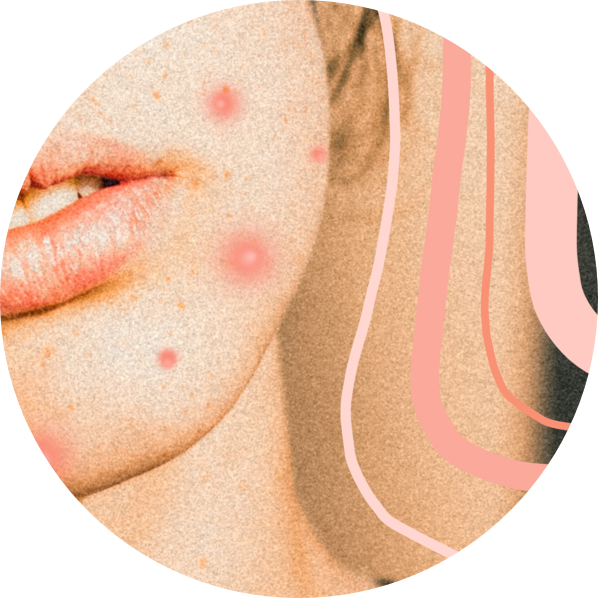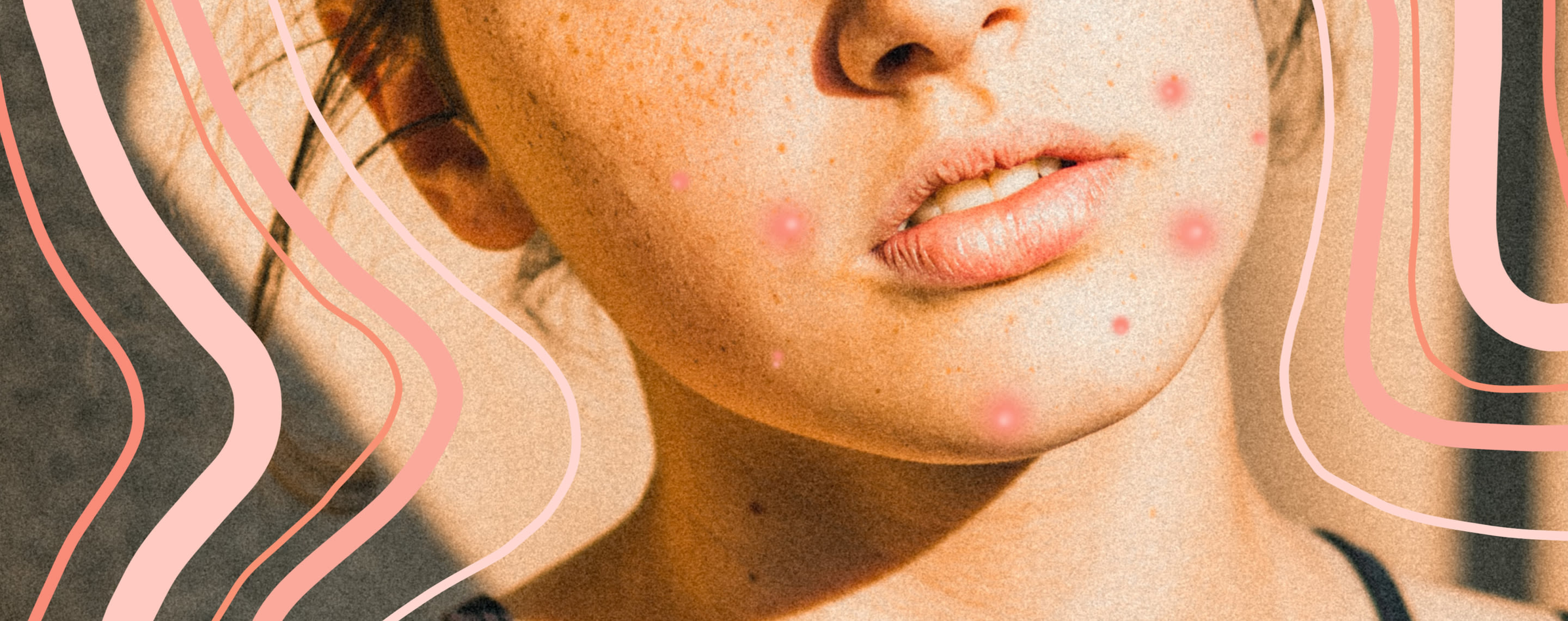Deep Dives
Painful acne: causes and treatment


SHARE
Deep Dives
Painful acne: causes and treatment
Medically reviewed by Kristin Hall, FNP
Written by Apostrophe Team
Last updated 4/1/2024
Fact: not all acne is created equal — something people with acne can all attest to.
First, there’s comedonal acne. That’s the clinical term for whiteheads and blackheads. And while those types of breakouts can be unsightly and annoying, they tend not to be overly painful.
Then, there’s cystic acne, which comes with a major “ouch factor.” We won’t sugar-coat it, this type of acne can be a bit of a nightmare. It can get inflamed and irritated, can take a long time to heal, and can even leave behind scarring.
But don’t worry! This painful, severe acne can be dealt with. You just need to know what to do — and, while we’re at it, what not to do. First, read up on what causes these painful breakouts, then we’ll walk you through ways to treat them.
What Is Cystic Acne and Why Is It Painful?
Comedonal acne forms on the surface layer of your skin, whereas cystic acne forms deeper underneath the surface. This type of inflamed acne fills with fluid, creating large cysts, and can be painful to the touch.
This severe form of acne can be difficult to treat — especially with over-the-counter products. When it does finally clear, it can leave behind lasting damage and scarring.
What Causes Cystic Acne?
This painful acne is caused by the same thing that causes other types of acne: when a combination of sebum and dead skin cells build up and cause a blockage in your pores and hair follicles.
Sebum is an oil-like substance that is naturally produced by your sebaceous glands to lubricate your skin and hair. It also helps protect your skin from bacteria and other potentially harmful substances in your environment.
Unfortunately, sometimes an excess of sebum is produced, which can build up and cause blockages, and those blockages can lead to painful and severe acne.
Excess sebum can be caused by a variety of factors, including:
Hormone imbalances — like the ones that occur during your period
Some people produce more sebum thanks to genetic factors
Environmental factors — like washing your skin excessively or working out a lot—also play a role
Dead skin cells also play a role in breakouts. Your body naturally sheds dead skin cells every 40 to 56 days as part of its process to renew and replace skin (also called epidermal turnover).
When these dead skin cells mix with excess sebum, they can contribute to blocked pores and breakouts.
While some types of acne are on the surface, cystic acne occurs deeper under the skin. As more bacteria grow, those under-the-skin lesions get bigger and become painful and inflamed.
If you use certain skincare or cosmetic products that contain heavy oils, you may also be more prone to clogged pores and cystic acne. And there are other lifestyle choices that also contribute to an increased risk of acne — including the cystic kind — like smoking, sleeping with makeup on, and more.
Treatment for Painful Acne
Painful cystic acne can be tricky to treat, but that doesn’t mean it’s untreatable! Speaking with a licensed healthcare professional is the best way to determine exactly what could work for your specific case of acne. Here are a few treatment approaches you may wind up considering.
Can Over-the-Counter Treatments Help At All?
The short answer is maybe. As mentioned above, over-the-counter products aren’t always the most effective when it comes to treating this type of acne because of how deep the cysts tend to be.
That said, over-the-counter products that contain benzoyl peroxide or salicylic acid have been found to help some people who experience painful acne. Tea tree oil, which has anti-inflammatory properties and is available in over-the-counter skincare products, has also been found to reduce swelling around painful acne.
Prescription Medications
If the over-the-counter stuff doesn’t cut it, prescription medication can likely help. There are topical options that are applied directly to the skin and infected area, as well as medications that can be taken orally.
Tretinoin and clindamycin are prescribed topicals. The first encourages your skin to shed dead skin cells that cause breakouts, the latter reduces acne-causing bacteria. Side effects for both include itching, dryness, and burning amongst other things when first starting out. If these things persist or worsen, you should contact your healthcare provider.

PRESCRIPTION TRETINOIN
Target acne, dark spots, and signs of aging with this science-backed ingredient.
Two oral options for treating painful cystic acne include birth control pills and Isotretinoin. The FDA has approved a handful of combined oral contraceptives for use in acne treatment, which works by lowering your levels of acne-causing hormones (like testosterone) and reducing sebum production. Isotretinoin also works by reducing sebum production, along with preventing dead skin cells from building up and clogging pores. Oral antibiotics are also sometimes prescribed because they can also prevent bacteria from multiplying.
At-Home Treatments
If you’re looking to deal with the pain, applying ice may help. Grab an ice cube from the freezer, wrap it in a paper towel, and apply it to the area for five minutes to 10 minutes. Repeat this two more times with 10-minute breaks in between.
One thing you should never do? Try to pop a painful, cystic acne spot yourself. Doing so, can spread the bacteria and make them even worse. Only a dermatologist should attempt to remove or reduce an acne cyst. They can carefully cut a cyst open and drain it or inject it with a corticosteroid to reduce inflammation and ease pain.
Certain lifestyle changes may help some people who are experiencing painful breakouts, too. Keeping your hands off your face, washing with a gentle cleanser twice a day, and minimizing direct sun exposure are all habits that can help reduce acne.
In Conclusion
Dealing with a painful bout of cystic acne can be frustrating. Hopefully, knowing both that you’re not alone in your fight against cystic acne and that there are science-backed treatments available is a silver lining.
To avoid suffering, skip the over-the-counter products that tend not to work and, instead, go straight to connecting with an expert dermatology team. From there, you will be able to discuss treatments for acne (like topicals, oral medication, or lifestyle changes) that will best alleviate your painful cystic acne.
Shop this post

Tretinoin

Clindamycin
Like what you just read? Sign up for our email list to get the scoop on skincare science delivered straight to your inbox.

Education
What is milia?
What is milia? Today, we’re jumping into one type of bump that you may have heard about most commonly in infants — milia.
Read More
Education
Best moisturizer for acne-prone skin
If you have combination acne-prone skin, figuring out which moisturizer is best for your skin might be tough. In this guide, we break down the best moisturizer for combination, acne-prone skin.
Read More
Education
How to build a face care routine
As you get into skincare, it might seem overwhelming, especially trying to figure out the order you're supposed to apply products in. Below, we detail how to build a face care routine for your skin!
Read More